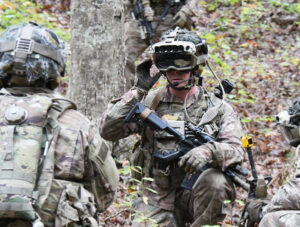
Microsoft’s [MSFT] deal to develop a version of the Integrated Visual Augmentation System (IVAS) with design improvements is worth $125 million, with the Army aiming to field the upgraded headsets in fiscal year 2025. Testing with the “1.2” version of IVAS is slated to begin “in the latter part of 2023,” a spokesperson for the Army’s Program Executive Officer Soldier has also confirmed to Defense Daily. “The Army employs a continual Soldier Centered Design (SCD) methodology that includes numerous and…

 By
By 











